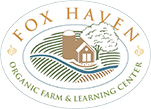Foragers Week 1: On Reciprocity and Willow: Your Supportive, Hype-You-Up Friend
By Allie Smith
Through November, I’m tasked with writing about a plant we meet during our monthly sessions at Fox Haven during Foragers 1: A Beginner’s Series to Gather Wild Food with Confidence & Respect for the Land (this title makes me particularly excited for what the months ahead have in store for us, so I use it here in its entirety).
Many of us have come to this course as what I would call enthusiastic amateurs. We’ve had some experience with plants that seeded–so to speak–a deeper curiosity and a recognition that there is so very much to learn about nature’s power, beauty, processes, taste, etc. etc. Though most of us are just meeting one another, we all have this shared commitment to starting/continuing this learning, which lent a feeling of connection to the first session that didn’t have to be explicitly named. That’s a lovely way to feel in a world that doesn’t always encourage being in community with others and deeper kinds of connection.

Early buds of ideas were paired with early Elderberry buds.
A tenet of this course, as the full title suggests, is reciprocity with the land. So connections feature prominently amongst not just us learners, but among all the living things we’re engaging with. In a previous life, I was an educator, and there was an early learning concept from the Reggio Emila preschools in Italy I always loved: space is the third teacher (in addition to the educator and the child, of course). Not one of these three teachers is more important than the others. The land and environment of Fox Haven will be our teacher, and in thanks we will be reflecting on ways we can in turn contribute back to those we meet.
This week we met two teacher plants, and because I can’t bear to play favorites, I think it fitting to introduce them both to you. First, we met the Black Willow, a resilient tree at the bottom of the sloping hill next to the Learning Center. Her branches are, well…willowy. This was the first word that popped into my head and therefore my first clue in identifying. This Willow has some huge Sycamore neighbors that make her seem small, but when considering that much of the trunk split away during a storm, it’s quite miraculous that so much new tissue has kept the rest of the tree safe and thriving. As our bruises and scars contribute to our body’s map, the Willow’s resilience shapes her into the tree that stands now.
 The most perfect yellowed chartreuse of the youngest branches (those that are about a year old) will live in my mind’s eye for a while. The color is beautiful, and the brighter color feels fitting to signify youth. We harvested these bits of young growth in order to take advantage of Willow’s very special status as hormone-producer-extraordinaire. Salicin (which produces salicylic acid and is the original source of aspirin) jumpstarts the Willow’s immune system, and she’s really got a lot of it. When this is shared with other plants, it can wake up their immune system too.
The most perfect yellowed chartreuse of the youngest branches (those that are about a year old) will live in my mind’s eye for a while. The color is beautiful, and the brighter color feels fitting to signify youth. We harvested these bits of young growth in order to take advantage of Willow’s very special status as hormone-producer-extraordinaire. Salicin (which produces salicylic acid and is the original source of aspirin) jumpstarts the Willow’s immune system, and she’s really got a lot of it. When this is shared with other plants, it can wake up their immune system too.

The second friend we met, and the beneficiary of some of the hormones Willow shared, was Elderberry. This plant and I go way back (and by way back I mean about four years), but I haven’t spent much time looking at any Elderberry shrubs in the wintertime. The Elderberry we visited at Fox Haven is at the bottom of the Herb Garden slope, opting for wetter terrain much like downhill Willow. The pair of two shrubs cut a dramatic figure next to the dried Burdock and its spiky seed pods.
My relationship with Elderberry before this course is pretty illustrative of my overall, current relationship with plants. That relationship is one way, and mostly in service of the small bakery I run in Baltimore. Elderflowers are my favorite to turn into flavorful syrups, and I wait anxiously all year to pick up a ton of flowers from Two Boots Farm in Hampstead, MD to turn into cakes and buttercreams through the fall. From these Elderberries, we instead took some strategic cuttings, taking care to note the shape of the shrub so we might benefit their (very fast!) growth this spring and summer.

And finally, our friends Elderberry and Willow met. By soaking our Elderberry cuttings in willow water before potting, we gave them a hormonal head start and a signal to root. Willow served as the ultimate supportive pal, hyping Elderberry up for the growth ahead. In a roundabout way, Willow ended up demonstrating the same spirit of generosity and support for the living beings around us that we hope to emulate in the course. Sure, we all have a lot of our own growth to focus on and energy to direct inward. The Willow, too, still needs to be able to generate new growth each season and especially when it’s damaged. But when we feel we have more energy to spare and the means to help other plant friends along, what might we give?
